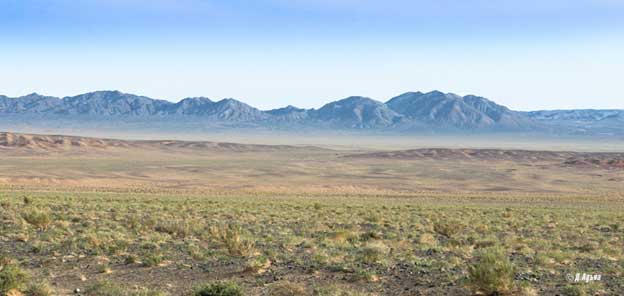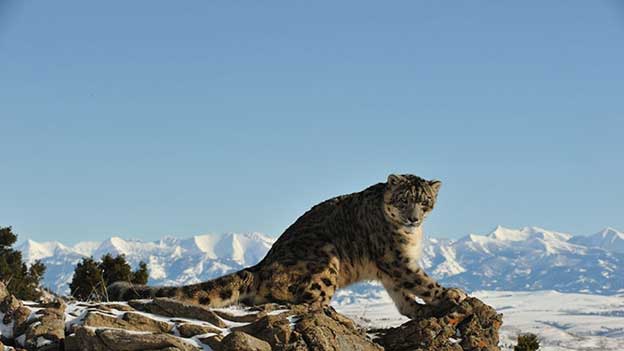Curbing Land Degradation & Protecting the Environment in Mongolia

Ulaanbaatar/ New Delhi/ Sydney/ London, May 15 (IPS) - Mongolia is one of the most sparsely populated countries in the world. Yet, more than 70 percent of its surface is affected by land degradation. Mining activities in several parts of the country have been a source of humanitarian and environmental concern. However, different stakeholders are coming together to work towards restoration and rehabilitation.
The Mongolian economy has been dependent on the mining sector for many decades. Seven percent of the Mongolian territory is licensed for mining exploration and exploitation.
The operations of mining companies in Mongolia have negatively affected herder communities' livelihoods, cultural traditions and access to fertile land and clean water. Increasing development of roads, railways and other infrastructures that support the mining industry in Mongolia is becoming another threat.
These constructions also infringe on the snow leopard's habitat, an animal native to the western and southern parts of the country.
Dwindling Habitats and Pasturelands
Mongolia is home to the second largest population of snow leopards in the world, after China. According to the World Bank, there are between 3,900 and 6,400 snow leopards left in the wilds of twelve countries today.
Of these, about 1,000 live across the Gobi Desert and Altai regions of Mongolia. In 2009, the entire mountainous landscape of the Tost Tosonbumba region was given away to mining licenses. The mining activities have begun to encroach upon the 1,500 sq. km where the snow leopards reside in the protected areas and national parks.
At the same time, the mining has also started to have adverse effects on pasturelands. About 40 percent of the population is rural, made up of traditional herders who still follow nomadic and semi-nomadic lifestyles.
Bayara Agvaantseren, Mongolia Program Director and founder of the Snow Leopard Conservation Foundation (SLCF), recalled how the local people felt when the mining first started in the Tost region.

They were confused and felt that their way of life was being disrupted: "By the law, the mining companies have to get their proposal to be discussed at the first level of community meetings. Then, if the community approves that company's proposal to work in the area, they would go to higher levels of decision-making. But we saw that in the actual on-the-ground decision-making process, the discussions with the local communities are not really happening, as they are mainly being done by higher levels."
Herders have a deep relationship with their land and the critical resources it provides—water and grazing—to support the animals that are their primary source of food and cash income.
Rapidly intensifying land degradation and desertification are placing the future of traditional herders—and the integrity of the steppe ecosystems that support them—at risk. Mining exploration and exploitation is increasing rapidly in these steppes, restricting the amount of land available for herders and affecting water supplies.
Working to Retain Ecosystem Integrity
Over the last decade, the SLCF, with the Snow Leopard Trust, have been working to revoke some mining licenses within the protected areas. In 2016, a nature reserve was set up between the Great Gobi National Park and the Gobi Gurvansaikhan National Park. The two national parks are now in a row, providing a much larger space for the endangered cats to roam around.
Local people were actively involved in campaigning and lobbying to make Tost a nature reserve. The foundation worked with local people to spread knowledge and make them aware of their rights to make decisions on land use. Moreover, the local people realized that their voice could be heard if they worked collectively.
Initially, citizens created several petitions and addressed high-level decision makers to voice their concerns over the mining industry. But on many occasions, the government had already granted licenses, leaving local communities feeling powerless.
Because of this, the SLCF stepped in to defend community rights: "From these cases and campaigns I see that local people have learned how to defend their rights. They had been campaigning with us for the last 7 years to make Tost a nature reserve."
After securing Tost as a nature reserve, the herders continued campaigning to revoke the mining licenses for a smaller area outside of Tost, which was used by vegetable growers. The government consented to their demands and included the land in the protected area of the nature reserve.
With the setting up of the reserve, there are additional opportunities to develop ecotourism in the area to benefit the local people. The Ministry of Nature and Environment has signed a contract with the government of the province to run the national park, but the process is still underway: "Stakeholders of this park are local people, a local government team. Also, SLCF has expressed that we are willing to help them build capacity to run the national park. In creating this management mechanism and management planning, we have been doing lots of workshops with these stakeholders and are now coming to the conclusive stage of finalizing management planning."
The Power of Environmental Activism
SLCF also helps local people to advocate their concerns to key decision makers. It runs a long-term ecological research programme in Tost Tosonbumba. Under the programme, the local people learn how to use scientific data, which is made available from international bodies and local conservation organizations.
Alongside this, they run educational programmes for school children aged 11–13 years. The programme intends to develop responsible representatives who are aware of how irresponsible mining poses risks to land, soil, water and biodiversity.
Local people, when empowered with the right information and resources, can emerge as great advocates and activists to protect community land. Batmunkh is a 75-year-old activist born in the Dornogovi province, and he has successfully protected 19 places under the "Locally Special Protected Areas."
He says: "I am not against mining developments, but I believe that mining should operate hand in hand with rehabilitation work. I think it should be done in a fair and regular fifty-fifty manner." Watch the full video interview with Batmunkh on YouTube.
Another important community player is Surenkhuu.L, a 59-year-old herder woman who lives in Tost Mountain, Gurvantes Soum, in the South Gobi Province of Mongolia. In 2009, she was selected as the Tost community leader by her fellow herders.
Since then, she has been managing a community group of 25 households as a part of the Snow Leopard Enterprise (SLE) program. Surenkhuu played a leading role in representing her community members when petitioning for protection of the snow leopard population.
In 2015, she gave a rousing speech at the Presidential Civil Hall Meeting, which received nationwide media coverage. The collective mission to turn Tost into a nature reserve took six years to come to fruition, but the efforts of community players like Surenkhuu were central to securing its success.
These stories are proof that the mining sector needs to take into consideration various social, environmental and humanitarian concerns. Backed by the right tools, the community has the power to come together to protect their rights and the environment.
Disclaimer: the views expressed in this story are those of the authors and do not necessarily represent those of the United Nations, including UNDP or the UN Member States.
Young Environmental Journalist pilot initiative is aimed at raising awareness and fostering youth engagement in environmental and human rights protection in the mining sector in four resource-rich countries: Colombia, Kenya, Mongolia and Mozambique.
This initiative was organized by the joint Swedish Environmental Protection Agency – UNDP Environmental Governance Programme (EGP) in collaboration with the United Nations Volunteers' online volunteering service.
© Inter Press Service (2020) — All Rights Reserved. Original source: Inter Press Service
 Global Issues
Global Issues